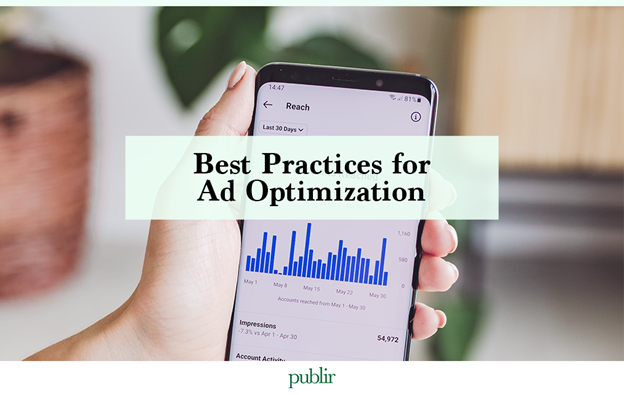
As more and more businesses are building their online presence, they are competing with each other for the attention of audiences. Creating an ad campaign is no longer enough. You need to invest a lot of time and effort to convert your audiences into regular customers. Ad optimization means the measures you take to improve the performance of your ad campaigns. Ad optimization helps you maximize your potential by targeting the right audience groups, leveraging the right tools and technologies, creating personalized messaging and content, and minimizing customer acquisition costs. The key to successful ad optimization campaigns is keeping them customer-centric instead of brand-centric. In this short piece, we will discuss the various strategies you can use for effective ad optimization.
1. Creating Multi-Channel Ad Optimization Strategies
Modern customers expect their brands to interact with them across various channels. They might start from one channel but continue their conversation on a different one. As such, you must create multi-channel campaigns to increase your chances of getting more customer conversions. Multi-channel optimization strategies include creating a uniform customer acquisition strategy containing different promotional and distribution channels. Creating multi-channel ad optimization campaigns saves time, effort, and costs by reusing media across different channels, allows your brand to reach a wider audience, and offers customers a uniform, seamless experience as they move between the channels.
Creating a multi-channel experience allows you to create a cohesive brand story across various channels. This means your customers will easily recognize your brand when they see it across various channels. To create and optimize a multi-channel ad campaign, you can do the following –
- Understand your target audience and their preferred channels
- Set achievable goals for your ad campaign
- Figure out your key performance indicators (KPIs) to track progress
- Create coherent brand messaging tailored for each channel
- Measure your performance and track attribution using tools like Google Analytics (GA)
Creating a multi-channel strategy might take a little more time and effort, but it puts you ahead of the competition if you can implement it well.
2. Track Your Campaigns and Make Real-Time Changes
To have a successful ad campaign, you need to have a strategy in place to measure and track your campaign’s performance. Tracking your KPIs is one way to gain insights into your ad campaigns. Measuring various key indicators help you monitor the performance of your keywords, i.e., if your keywords are not bringing in enough traffic, you can immediately intervene and change them. You can test your campaigns with different content types and media platforms, you can understand which media types are the best for campaigns and which ones boost engagement. There are many tools that allow you to monitor audience behavior and figure out which parts of your campaign your audience is engaging with the most and the least. If you have this information, you can easily make changes to make your advertisements more tailored for your audience groups. Using tools like Adobe Analytics and Google Attribution, you can know how each channel is driving traffic.

Reaching your audience groups using the right channel is critical to successful multi-channel ad optimization campaigns.
3. Align Your Ad Strategy With Your Buyer’s Journey
The most effective ad campaigns focus on customers and not the brand. Thus, your strategy should be catered to the needs and expectations of your audiences. Typically, a buyer goes through three stages before converting into customers. The first stage is awareness, i.e., the customer gets acquainted with the problem/issue your product or service addresses. You can create scenarios and examples that exemplify and acknowledge this problem. Use visuals to grab your audience’s attention.
The second stage is consideration, i.e., the prospective buyers consider solutions to the problem you have highlighted. At this stage, advertisements that position you as a leader in targeting those problems work the best. Your capability and expertise with that problem must be at the forefront. At this point, you can use various retargeting ads to interact with users who have already engaged with your previous advertisements. Another interesting way is life event targeting, where you run personalized ads based on important life event milestones of your customers (for instance, their graduation or when they are moving to a new place).
The last stage is making a decision, i.e., the prospective buyer evaluates the best provider to solve the highlighted problem. At this stage, you need to generate content that helps prospects to make their final decision. For successful ad optimization, brands need to consider all three stages and make advertisements relevant to customers at different stages. You need to create content for different audience groups that are at different touchpoints in their purchase journey. Aligning your advertisements to your customer’s purchase journey will optimize your ad campaigns and make them more effective.
While personalizing your advertisements to your customers and their purchase journeys, you should be mindful of their privacy. They can invest in high-quality first-party data and leverage trusted customer relationships to collect information and provide highly relevant and targeted marketing. You can use various probabilistic models to get the most out of first-party data and understand your customers.
At Publir, we are committed to maximizing the revenue of content creators by offering holistic solutions for AdBlock recovery, ad optimization, subscriptions, merchandising, and fundraising. We use the best practices and automation tools to collect recurring revenue and engage users. Curious about ad optimization? Visit us here or email us at sales@publir.com to get started today.
